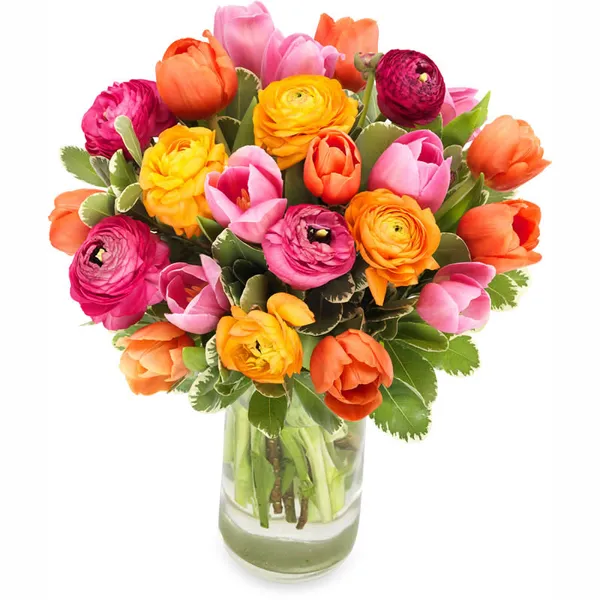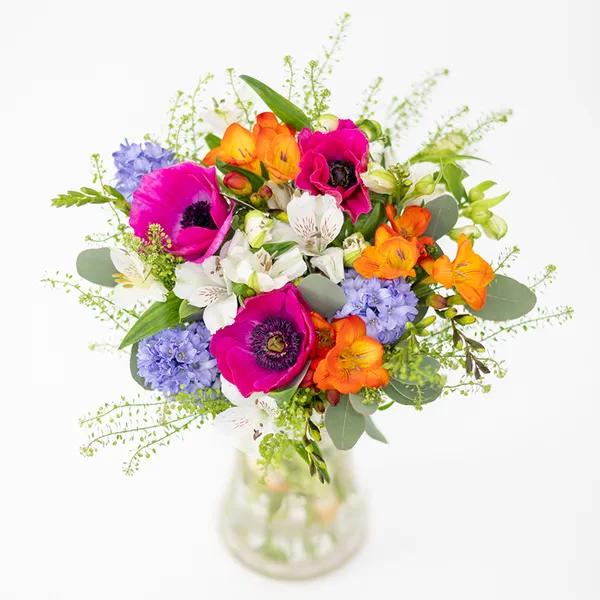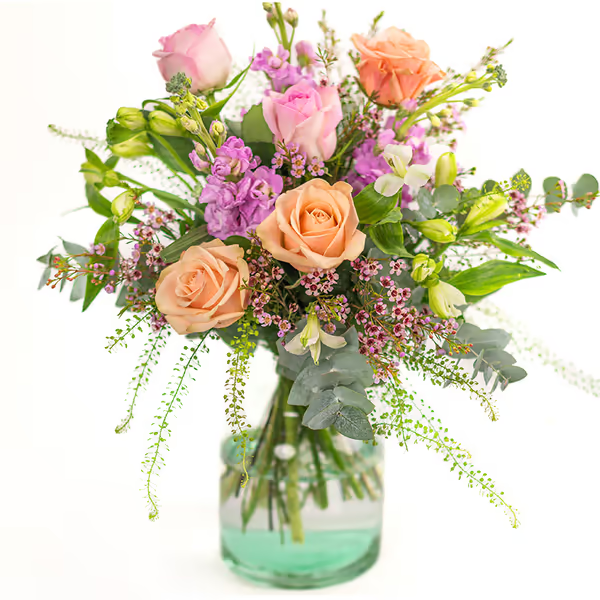Ranunculus: The Elegant and Romantic Flower
Ranunculus flowers are known for their delicate, lush petals and romantic aesthetic. With their vibrant colors and densely layered blooms, they resemble small, perfectly formed roses. They symbolize charm, attraction, and admiration, making them a popular choice for wedding bouquets, romantic arrangements, and spring decorations. Originally from the Mediterranean region and Asia, ranunculus flowers come in a variety of colors, including white, yellow, pink, red, orange, and purple.
COMMON NAME
Ranunculus
BOTANICAL NAME
Ranunculus asiaticus
ORIGIN
Mediterranean region, Asia
PEOPLE ALSO CALL IT
Buttercup
FLOWERING TIME
Spring (March to May)
ASPECT
Full sun to partial shade
SYMBOLISM
Charm, attraction, admiration, happiness
Care Tips for Cut Ranunculus in a Vase
Trim Stems at an Angle: Cut the stems diagonally to improve water absorption.
Use Fresh Water: Change the water every two days to keep the flowers fresh.
Add Floral Preservative: Use flower food to extend the bloom’s lifespan.
Keep Cool: Place the vase in a cool area away from direct sunlight or heat sources.
Avoid Excess Moisture: Ranunculus flowers are sensitive to too much moisture, so ensure the vase is clean and the water stays fresh.
Symbolism & Meaning
Ranunculus flowers symbolize charm and attraction. They express admiration and gratitude, making them a popular choice for romantic gestures or as a token of appreciation. In many cultures, they are associated with happiness and positivity, making them an ideal flower for joyful occasions.
Types of Ranunculus
Ranunculus flowers come in different forms and colors, making them suitable for various floral arrangements and garden designs. The most well-known variety is the Persian Buttercup (Ranunculus asiaticus), famous for its lush, rose-like blooms. Persian Ranunculus varieties are particularly large-flowered and commonly found in florists. Wild Ranunculus, also known as buttercups, grow naturally in meadows and are a more resilient version of this elegant flower.
With their stunning color diversity and romantic appeal, ranunculus flowers are a perfect choice for spring bouquets, weddings, and festive decorations.
Frequently Asked Questions About Ranunculus
Ranunculus bulbs (technically tubers) require proper planting for healthy growth and vibrant blooms. Follow these steps:
- Pre-soak the bulbs: Before planting, soak the claw-shaped tubers in lukewarm water for 3-4 hours. This helps hydrate them and speeds up growth.
- Choose a location: Select a sunny spot with well-draining soil. Ranunculus thrive in full sun and fertile, loose soil enriched with compost.
- Planting depth and spacing:
- Dig holes 2-5 cm deep.
- Space tubers 10-15 cm apart to allow room for growth.
- Positioning the bulbs: Plant the tubers with their "claws" facing downward, as these are the root structures.
- Watering: Water lightly after planting. Keep the soil moist but not soggy, as excessive moisture can cause rot.
- Mulching (optional): In colder climates, apply a light layer of mulch to protect the tubers from frost.
Planting time: Ranunculus bulbs should be planted in early spring (around March to April) in regions with cold winters, as the bulbs need a warm environment to sprout and grow. For milder climates, you can plant them in autumn to bloom in winter or spring.
Soil temperature: Ensure the soil temperature is around 10-15°C when planting to encourage optimal growth.
Ranunculus are perennials in mild climates. They will bloom year after year if the winter temperatures do not drop too low.
In colder climates, ranunculus are typically grown as annuals or the corms are dug up and stored indoors during the winter to be replanted in the spring.
Ranunculus bloom depending on when they are planted:
- Autumn-planted ranunculus (in warm climates) will bloom in late winter to early spring (February-April).
- Spring-planted ranunculus (in colder climates) will bloom in late spring to early summer (May-July).
- Blooms typically last for 4-7 weeks, depending on weather conditions and care.
Ranunculus grow beautifully in pots and containers. Follow these steps for best results:
- Choose a pot: Use a deep container (at least 15-20 cm deep) with drainage holes to prevent waterlogging.
- Use well-draining soil: A light, sandy, or loamy potting mix with added compost works best.
- Plant the tubers:
- Place tubers 3-5 cm deep in the soil.
- Space them 5-8 cm apart for a fuller display.
- Position the claw-like tubers facing downward.
- Watering: Water lightly after planting and keep the soil moist but not soggy. Overwatering can cause rot.
- Sunlight: Place the pot in a sunny location, as ranunculus need at least 6 hours of direct sunlight per day.
- Temperature considerations: If temperatures drop below -4°C, move the pot indoors or cover it with a protective layer to prevent frost damage.
- Fertilizing: Feed with a balanced liquid fertilizer every 2-3 weeks during the growing season for healthy blooms.



